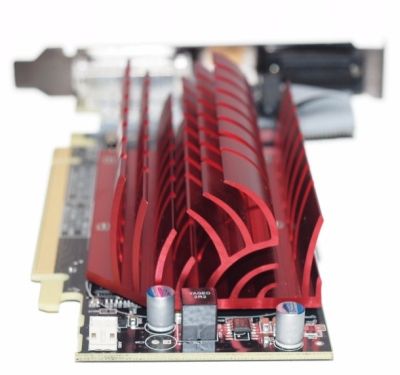Power & Temperatures — AMD’s Radeon HD 5450: The Next Step In HTPC Video Cards
by Ryan Smithon February 4, 2010 12:00 AM EST
- Posted in
- GPUs
77 Comments
|
77 Comments
IndexMeet the 5450Meet the Sapphire 5450The Almost Perfect HTPC CardThe TestCrysis: WarheadFar Cry 2BattleforgeHAWXDawn of War IIResident Evil 5Batman: Arkham AsylumLeft 4 DeadPower & TemperaturesConclusion
Power & Temperatures
While entry-level video cards may not top the performance charts, their low transistor count and low power usage means that they do very well on our power and temperature charts. And by being passively cooled, they are winners by default for noise, as they don’t generate any noise to measure.
On paper these cards differ by around a few watts when it comes to idle power, but by the time you put them in our i7 test rig, those few watts melt away. The Radeon 5450, the Radeon 4550, and the GeForce 210 all idle at 121W on our test rig, tying with the GeForce GT 240 for the lowest idle power usage we’ve measured.
Under load this changes some. The 5450 offers the second-lowest load power usage that we’ve measured, coming in below things like the GT 220 and the 4550. It doesn’t quite best the GeForce 210 however, which we believe to be a combination of the 210’s smaller-yet GPU and differences to how NVIDIA and AMD go about throttling their cards when we’re running FurMark.
At any rate, the 5450 does particularly well against other AMD cards, not only beating the 4000-series, but coming in under the 5670 by a hefty 47W. The 5670 may be the better HTPC card from a deinterlacing standpoint right now, but you pay for it with power.
We should note that for our load temperature testing, we use a closed case with all of the fans active on our Thermaltake Spedo case. So the results here are from plenty of airflow being sent towards the first PCIe x16 slot. Since we’re looking at passive cards today, they’re much more affected by this than actively cooled cards are. In a case with little to no airflow, these passive cards would definitely get hotter.
Since we’re looking at passive cards today, they’re much more affected by this than actively cooled cards are. In a case with little to no airflow, these passive cards would definitely get hotter.
For load temperatures, the 5450 is the coolest video card we have ever tested, taking the title by 4C over its nearest competitor, the GeForce 210. This is thanks in a large part to the use of a double-wide heatsink for better heat dissipation, and of course the low power consumption of the 5450 in the first place. This also gives us a chance to quantify the differences between the double-wide heatsink on the reference card and the single-wide heatsink on the Sapphire 5450; the smaller Sapphire heatsink is only 4C worse at 51C. The double-wide heatsink in this case looks to be overkill.
At idle things change some. Our coolest cards are the actively cooled cards, which have their own fans to keep them cool. The passively cooled cards on the other hand build up some additional heat, coming in at the mid-40s, similar to several of our mid-range cards.
Left 4 Dead
Conclusion
IndexMeet the 5450Meet the Sapphire 5450The Almost Perfect HTPC CardThe TestCrysis: WarheadFar Cry 2BattleforgeHAWXDawn of War IIResident Evil 5Batman: Arkham AsylumLeft 4 DeadPower & TemperaturesConclusion
PRINT THIS ARTICLE
Radeon HD 5450 Review: HTPC Heaven?
Written by
Richard Swinburne
February 9, 2010 | 08:09
Tags: #1gb #512mb #blu #card #compare #hd #high-definition #igp #perform #performance #playback #quiet-computing #radeon #ray #result #review #video
Companies: #amd #ati #blu-ray #test
1 — Radeon HD 5450: Low Power, HTPC Heaven?2 — Testing Methods3 — System Cost versus Performance4 — Call of Duty: Modern Warfare 25 — Serious Sam HD6 — Trackmania United Forever: Star Edition7 — Blu-ray Playback8 — Power Consumption and Conclusion
Power Consumption
- AMD 785G (Phenom II X2 550 BE)
- Intel GMA HD (Core i5 661: 900MHz IGP)
- Intel GMA HD (Core i3 530: 733MHz IGP)
- Nvidia GeForce 9400 (Core 2 Duo E8500)
- ATI Radeon HD 5450 (Phenom II X2 550 BE)
-
46
-
47
-
47
-
52
-
65
10
20
30
40
50
60
70
Watts
- Intel GMA HD (Core i5 661: 900MHz IGP)
- Intel GMA HD (Core i3 530: 733MHz IGP)
- Nvidia GeForce 9400 (Core 2 Duo E8500)
- AMD 785G (Phenom II X2 550 BE)
- ATI Radeon HD 5450 (Phenom II X2 550 BE)
-
-
97.
 0
0 -
13.5
-
-
-
88.0
-
13.4
-
-
-
87.0
-
12.0
-
-
-
99.0
-
10.2
-
-
-
115.0
-
8.7
-
25
50
75
100
125
Sorted by Efficiency
Just like with the Blu-ray playback, adding a graphics card means a higher idle and load power use. This naturally means its performance to power consumption factor is the lowest too, with its direct competitor, the Core i3-530, up ahead by a few orders of magnitude.
Click to enlarge
Conclusion
What the Radeon HD 5450 graphics card brings to the party depends on what you want it for. It doesn’t help general productivity — it might reduce the demand on the main memory by integrated graphics, but this, in our test, makes no difference to real world CPU performance. Essentially, it’s adding to the system cost when you don’t need it. Office PCs, for example, will find integrated graphics is more than capable for doing things that people in suits and offices do.
If you do dabble in gaming, for PCs plugged into TVs at a 720p HD resolution the Radeon HD 5450 offers a more impressive and fluid gaming experience than onboard graphics. That said, while it’s a step up, it’s not a huge climb up the ladder. £40 buys you a few more FPS but with a 3D image that still look incredibly basic — this has always been the case at this price though, so we still strongly recommend saving up a little longer — even just £20 more — for something much more capable, while on a budget.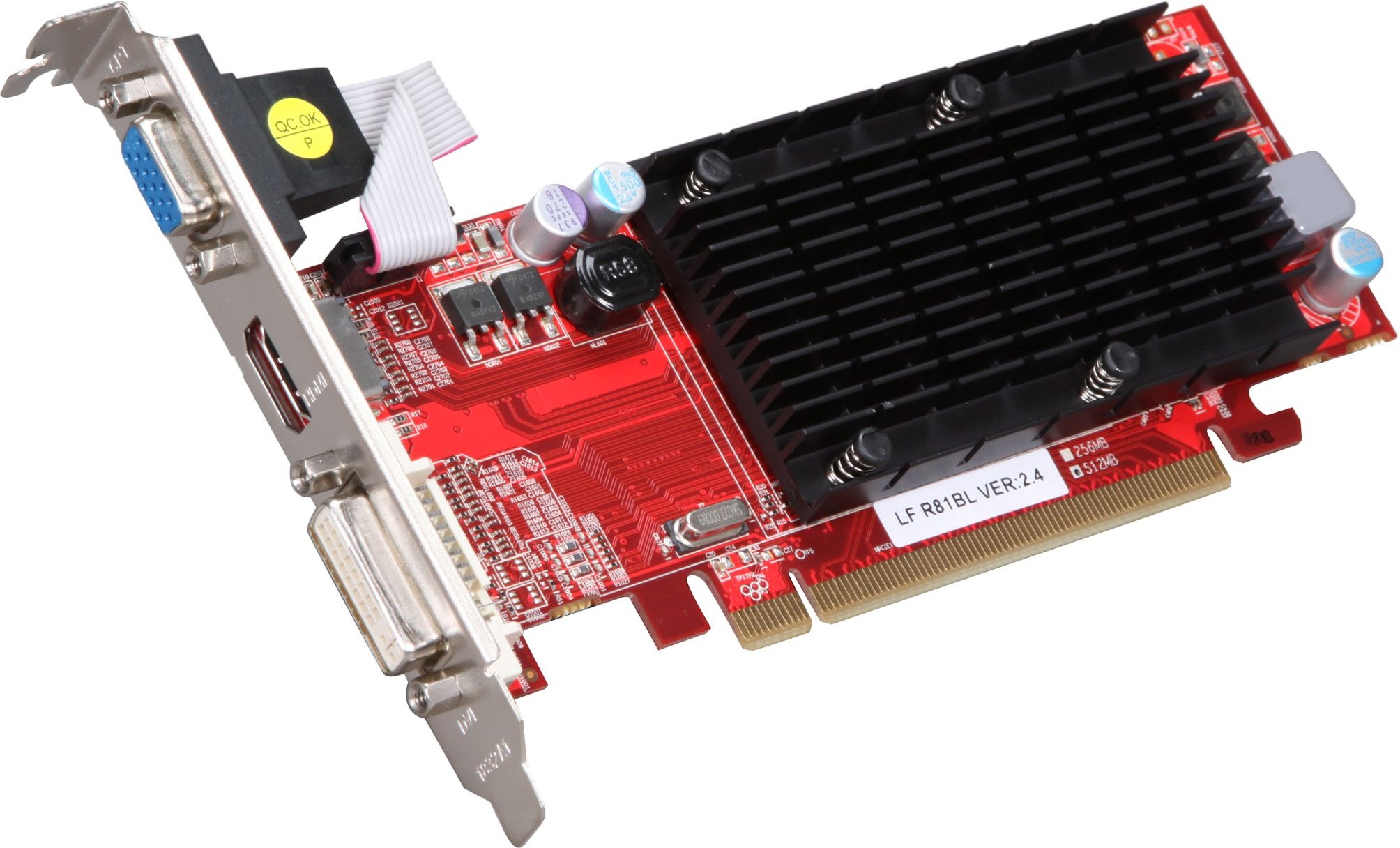
The best part about the Radeon HD 5450 is its capacity as a feature leading HTPC device (despite the current issues with MPC:HC, and there’s plenty of other software out there). If you do invest a little cash in a 785G motherboard with low power Athlon CPU, it can then easily be upgraded with a small, low profile, passively cooled HD 5450 should you get serious with your Blu-ray watching at a later date. If you do get serious, then the Core i3-530 is the better choice straight out the box: it does everything the HD 5450 does, features wise, with the same overall system costs, but featuring a CPU and GPU in one chip means lower power usage. As it’s an Intel CPU, it also offers better 2D performance in general.
Given the comparative cost of a stand alone Blu-ray drives, the PS3 factor, or one of the many bespoke h.264 HD-capable media players out there available for a fraction of the price — we fell that we may be looking at the last gasp area of the HTPC, an opinion the HD 5450 does nothing to change.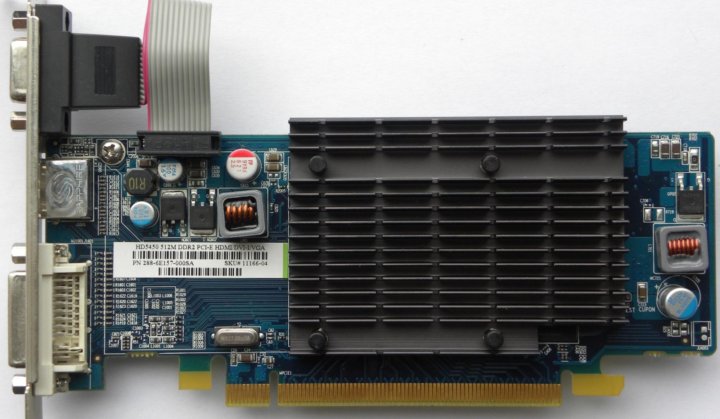
The Radeon HD 5450 directly challenges Intel’s GMA HD in the HTPC realm and certainly exceeds it for gaming, but in other areas — total system price, power usage — it’s outmoded. Still, AMD’s 890GX IGP is out in less than a month, so there remain plenty of interesting developments to come from the red team.
- Features
- x
- x
- x
- x
- x
- x
- x
- x
- x
- —
- 9/10
- Performance
- x
- x
- x
- x
- x
- x
- x
- —
- —
- —
- 7/10
- Value
- x
- x
- x
- x
- x
- x
- x
- x
- x
- —
- 9/10
- Overall
- x
- x
- x
- x
- x
- x
- x
- x
- —
- —
- 8/10
Score Guide
1 — Radeon HD 5450: Low Power, HTPC Heaven?2 — Testing Methods3 — System Cost versus Performance4 — Call of Duty: Modern Warfare 25 — Serious Sam HD6 — Trackmania United Forever: Star Edition7 — Blu-ray Playback8 — Power Consumption and Conclusion
Review Radeon HD 5450
- Introduction
- Architecture
- Sapphire Radeon HD 5450
- ATI Radeon HD 4350
- Test stand and test procedure
- Acceleration
- Temperature rating
- Performance testing
- Conclusion
Today we present to your attention a review of the youngest video card among Radeons of the fifth series. This accelerator, based on the Cedar graphics processor, closes the series of ATI premieres as part of the launch of a new generation of video cards (not counting the other Radeon HD 5830 announced later). The release of the entry-level video card was planned even before the premiere of the HD 5870 and took place right on schedule — in the first quarter of this year.
This accelerator, based on the Cedar graphics processor, closes the series of ATI premieres as part of the launch of a new generation of video cards (not counting the other Radeon HD 5830 announced later). The release of the entry-level video card was planned even before the premiere of the HD 5870 and took place right on schedule — in the first quarter of this year.
The video card complies with both key features of the «5000th» family — the processor is manufactured in compliance with the 40-nm process technology and supports the DirectX11 API. However, you should not delude yourself — despite the use of advanced technologies, the accelerator that opens the lineup cannot be too powerful by definition. Among the people, such video cards are often disparagingly referred to as «gags», indicating an extremely low level of performance, insufficient even for «light» games. Often, such accelerators are delivered directly to the OEM market and find shelter in ready-made system units of the “advanced office” or “family computer” level. And yet, and it’s impossible not to write about it, dishonest sellers simply adore such cards, offering inexperienced users “gaming” configurations with completely inappropriate filling. Just imagine how good it sounds: «A powerful home computer with the latest ATI graphics card equipped with 512 MB of video memory and supporting DirectX11» 😉
And yet, and it’s impossible not to write about it, dishonest sellers simply adore such cards, offering inexperienced users “gaming” configurations with completely inappropriate filling. Just imagine how good it sounds: «A powerful home computer with the latest ATI graphics card equipped with 512 MB of video memory and supporting DirectX11» 😉
In our testing, we’ll try to find out whether the new ATI accelerator can be used for its intended purpose, or whether the video card’s power is enough only to demonstrate the «desktop» and office work.
Those who wish can study the architecture of the new video processor in detail on the ATI presentation slide, which we present below:
The graphics core has 80 stream processors, 4 ROPs and 4 texture units. Thus, the new 40-nm Cedar graphics processor, in terms of the number and type of functional blocks, completely repeats the 55-nm RV710 used on the Radeon HD 4350 and Radeon HD 4550 video cards. The table shows the characteristics of these video cards for comparison with the new product:
| video card name |
Radeon HD 4350 |
Radeon HD 4450 |
Radeon HD 5450 |
| Process technology, nm |
55 |
55 |
40 |
| Core area, mm 2 |
73 |
73 |
53 |
| Number of transistors, mln pieces |
242 |
242 |
292 |
| Number of stream processors |
80 |
80 |
80 |
| Number of texture units |
8 |
8 |
8 |
| Number of ROPs |
4 |
4 |
4 |
| Core clock, MHz |
600 |
600 |
650 |
| Effective video memory frequency, MHz |
800/1000 |
1600 |
800/1600 |
| Video memory type |
DDR2 |
GDDR3 |
DDR2/GDDR3 |
| Video memory bus width, bit |
64 |
64 |
64 |
| Memory bandwidth, GB/s |
6. 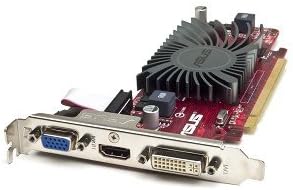 4/8 4/8 |
12.8 |
6.4 / 12.8 |
| Video memory size, MB |
256 / 512 |
256 / 512 |
512 / 1024 |
| TDP, W |
22 |
25 |
19 |
| DirectX |
10.1 |
10.1 |
eleven |
recommendations
So, upon careful examination of the data, it becomes clear that the new video card, in terms of performance, can only slightly outperform its predecessors. The main advantages of the HD 5450 are explained by the transfer of the video processor to the 40-nm process technology: the video card consumes less power and has a slightly higher core frequency. Otherwise, the HD 5450 in the version with DDR2 video memory practically repeats the characteristics of the HD 4350, and with the GDDR3 video memory, the characteristics of the HD 4550. Interestingly, this fact can be seen in the new index: «450» - just between «350 and «550», which means that the new video card is replacing both of these models. The next oldest model in the hierarchy of the «fifth series» — HD 5570 — is already a much more powerful accelerator based on the Redwood video processor.
The main advantages of the HD 5450 are explained by the transfer of the video processor to the 40-nm process technology: the video card consumes less power and has a slightly higher core frequency. Otherwise, the HD 5450 in the version with DDR2 video memory practically repeats the characteristics of the HD 4350, and with the GDDR3 video memory, the characteristics of the HD 4550. Interestingly, this fact can be seen in the new index: «450» - just between «350 and «550», which means that the new video card is replacing both of these models. The next oldest model in the hierarchy of the «fifth series» — HD 5570 — is already a much more powerful accelerator based on the Redwood video processor.
It should be noted that «pure» power cannot be considered a priority characteristic of video cards of this class. This is also indicated by the content of ATI’s presentation dedicated to bringing the HD 5450 to the market. Very little attention is paid to the performance of the novelty here, but marketers are doing their best to focus on DirectX11 support and ATI Eyefinity technology.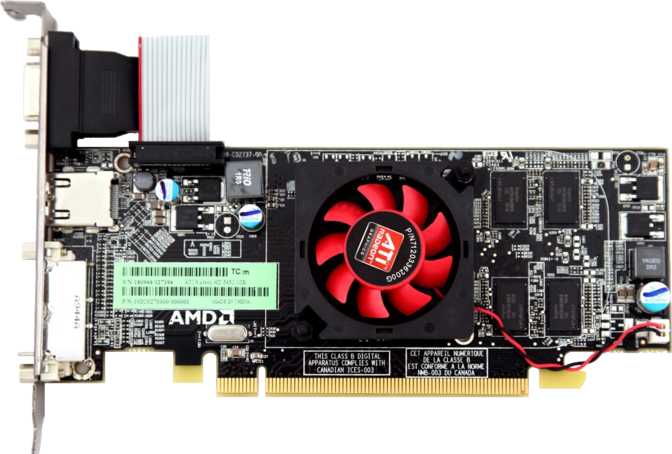 Regarding the first, let me immediately express my skepticism — what kind of use of DX11 can we talk about with such a meager processing power of the video card? According to this parameter, the HD 5450 is more than five times inferior to the already low-power HD 5670, or, for example, approximately fifty (!) Times to the current «world leader» in 3D graphics — Radeon HD 5970. So we can’t count on using DirectX11 to improve the picture, we just don’t have enough hardware resources on the HD 5450 to get decent graphics.
Regarding the first, let me immediately express my skepticism — what kind of use of DX11 can we talk about with such a meager processing power of the video card? According to this parameter, the HD 5450 is more than five times inferior to the already low-power HD 5670, or, for example, approximately fifty (!) Times to the current «world leader» in 3D graphics — Radeon HD 5970. So we can’t count on using DirectX11 to improve the picture, we just don’t have enough hardware resources on the HD 5450 to get decent graphics.
But another use of the new API — improving performance in «fresh» games (as a result of optimization) compared to the DirectX10 API, may be in demand. But even here everything is limited by the low power of the HD 5450. Looking ahead, let’s explain: for example, in the game «Stalker: Call of Pripyat» the inclusion of Dx11 (without tessellation and other «improvements») leads to an increase in performance compared to the Dx10-Dx10.1 modes — but we still cannot use this “bonus”, the framerate remains too low even at the minimum settings. In order to play Stalker, you need to switch the renderer to DX9 modeonly then will it be possible to obtain an acceptable number of frames per second. Similar situations can be repeated in other games where the new product will not have enough power.
In order to play Stalker, you need to switch the renderer to DX9 modeonly then will it be possible to obtain an acceptable number of frames per second. Similar situations can be repeated in other games where the new product will not have enough power.
Another innovation is support for ATI Eyefinity technology, which allows connecting several monitors to one video card, on the contrary, the HD 5450 is the strongest trump card. desktop space. Essentially, buying a younger Radeon now looks like the easiest and most affordable way to put together a three-monitor configuration.
Also worth mentioning is the ability of the “younger” Radeon to provide hardware acceleration and all sorts of additional picture improvements when playing high-definition video (VC-1 and H.264 formats). Considering the presence of an HDMI connector (revision 1.3a) and the ability of the board to also provide 7.1-channel audio output (192 kHz / 24-bit with support for various standards, up to DTS-HD audio and Dolby True HD), the video card looks like an excellent candidate for using as part of the multimedia center.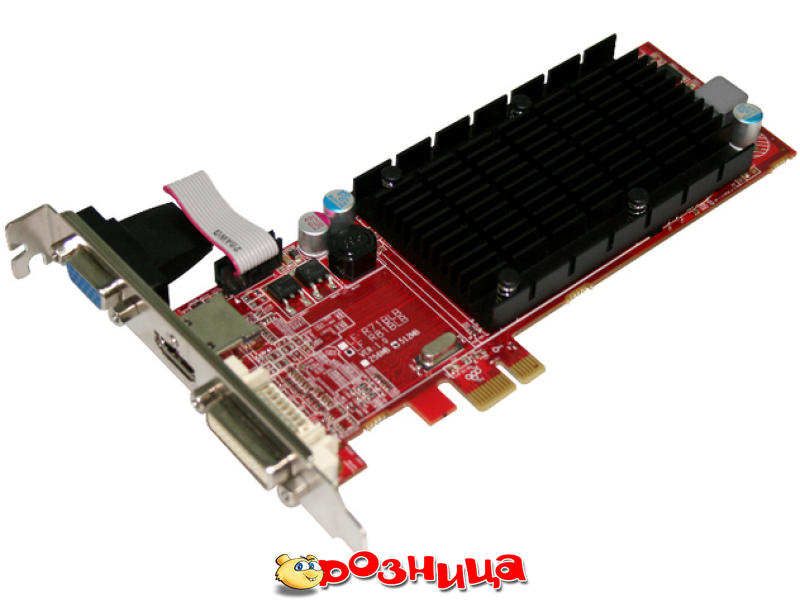
Subscribe to our channel in Yandex.Zen or telegram channel @overclockers_news — these are convenient ways to follow new materials on the site. With pictures, extended descriptions and no ads.
Radeon HD 5450 video card: specifications, reviews
admin hd-technics
Architecture
After the GPU was stripped of most of its functional blocks and GDDR5, 292 million transistors remained, and the die area was reduced to 59mm2. This is less than half of the Redwood transistors with a slightly larger die size. In this case, reducing the number of elements, not corresponding to a significant reduction in shader capabilities, is a great example of the difficulty of bringing a design to a budget level. Although AMD does not release snapshots of the die, it is safe to assume that most of it is occupied by modules such as the PCIe controller, UVD2.2, and the rendering pipeline. AMD can’t cut them like shaders, which is why they’re the main victims of the transistor cut.
AMD can’t cut them like shaders, which is why they’re the main victims of the transistor cut.
Cedar comes with a 64-bit memory bus that does not support GDDR5. Instead, the processor works with DDR2 and DDR3. The
Cedar is practically no different from the RV710 chip in the core of the Radeon 4350 and 4550 video cards. It has the same number of functional blocks and the same memory interface, which operates at the same frequency. Support for DX11 and Eyefinity brings it even closer to the 4000 series. Cedar has the same connectors as the RV710 so that the manufacturer can replace the latter in existing Radeon 4350/4550 designs.
Despite all these similarities, the GPU has 50 million more transistors. This means that AMD has spent most of the space saved by moving to 40nm by adding Evergreen features and reducing die size.
One of the benefits of getting rid of a lot of shaders and GDDR5 is a significant reduction in power consumption. According to AMD, the HD 5450 has a TDP of 19. 1W and idle power of 6.4W. This is two-thirds less than the consumption of the HD 5670. The fact that the HD 5450 is the card with the lowest frequency in the 5000 series, which is 650 MHz, also played a certain role.
1W and idle power of 6.4W. This is two-thirds less than the consumption of the HD 5670. The fact that the HD 5450 is the card with the lowest frequency in the 5000 series, which is 650 MHz, also played a certain role.
It goes without saying that the budget model does not claim the attention of sophisticated gamers. Instead, the card caters to budget-conscious buyers who want their first true GPU. This means taking advantage of UVD/HTPC, Eyefinity, GPGPU acceleration, and significantly improved gaming performance compared to IGP solutions. In addition, AMD is positioning this model as a DX11 card, but the performance of the Radeon HD 5450 is not sufficient to take advantage of the supported features other than the tessellator.
The manufacturer designed the 5450 as a competitor for the GeForce 210. In terms of power and form factor, it succeeded. However, the GeForce 210 is running an even smaller GPU than the Cedar, combined with DDR2 memory. This means a difference in both performance and price — the cost of competing cards is less.
Model Overview
Although the AMD Radeon HD 5450 with DDR3 graphics card is supposed to run at 650 MHz, it can be as high as 9 by OEMs.00 MHz.
The model was intended to replace the Radeon HD 4350 and 4550 models. The former was AMD’s previous low profile card, and the latter was the DDR3 version. Thus, the HD 5450 is similar in size and power to the 4350, but has the capabilities of the HD 4550 processor. With. The Radeon HD 5450 was also released with 1GB and 512MB of DDR2 memory. Thus, different card configurations are possible.
Base model is a 168mm low profile card (same as 5670). The low power consumption of 19.1W made passive cooling possible, so AMD installed a double-wide heatsink. This is in contrast to the HD 4350, which had active cooling in its base variant and almost all third-party products were passively cooled. However, there is a 2-pin fan header on the back of the board, allowing for active cooling. This feature was used in the ATI Radeon HD 5450, the processor of which was cooled by a fan.
The model is equipped with 4 DDR3 memory chips — two on the front of the board and two on the back.
Those hoping to squeeze a little more out of the base card will be disappointed as the manufacturer has disabled overclocking on the Radeon HD 5450 by default. This opportunity is provided to third-party manufacturers.
Because the AMD Radeon HD 5450 is a low profile card, there is another option in the port configuration. It is directly equipped with 1 DVI port and 1 DisplayPort, while the VGA port is available separately on a bracket connected to the board with a cable. The HD 5450, like all other 5000 series cards, supports 3 Eyefinity monitors, so all 3 ports can be used at the same time, although the VGA port would obviously be the least desirable.
Note that only DisplayPort models support Eyefinity.
Almost perfect HTPC card
When AMD announced that the Radeon 5000 series supports audio streaming, it was clear that it would be great for home theater. Unfortunately, we had to wait for cards with passive cooling, which are more suitable for this. With the release of the HD 5450, a dream has become a reality.
Unfortunately, we had to wait for cards with passive cooling, which are more suitable for this. With the release of the HD 5450, a dream has become a reality.
This, in turn, led to a review of the HTPC situation to ensure that the performance of the Radeon HD 5450 was indeed sufficient. The 4350 and 4550 raised the bar by offering 8-channel LPCM audio, but there were issues with their video capabilities. Since deinterlacing and other post-processing is done by the hardware shader, the limited capabilities of these cards mean that AMD cannot offer the entire AVIVO suite. It was enough to get perfect scores in the HD HQV test, but here the problems began.
The main complaint was that the best and most computationally intensive VAD mode was not always available for HD video. This depended on the driver version, but AMD has disabled this feature (and most other AVIVO features) when Smooth Video Playback is enabled.
According to reviews, the Radeon HD 5450 did not meet the expectations of users that this problem would be solved. According to AMD, this card has enough power to allow it to use all of AVIVO’s image processing features simultaneously. This means that the drivers allow VAD and noise reduction to be enabled even when video smoothing playback is enabled. However, in user tests with Smooth Video enabled, everything works except VAD mode.
According to AMD, this card has enough power to allow it to use all of AVIVO’s image processing features simultaneously. This means that the drivers allow VAD and noise reduction to be enabled even when video smoothing playback is enabled. However, in user tests with Smooth Video enabled, everything works except VAD mode.
Don’t worry too much about this though, as the HD 5450 is a great home theater card. All other functions do their job well, and the Motion Adaptive (MAD) interpolation mode is quite good. In fact, the only practical reason for using adaptive vector deinterlacing is better handling of slanted lines than MAD. So the only problem with the 5450 as an HTPC card is poor picture quality when watching sports on a large TV, where using motion-adaptive interpolation will result in jagged lines on the sports field.
This is the only reason why the HD 5450 is not an ideal home theater card.
The following are test results that clearly demonstrate which games will work on the Radeon HD 5450 and which will not.
Crysis: Warhead
This is one of the most demanding games. The result of testing at a resolution of 1280 x 1024 0x AA is 12.3 fps and 1024 x 768 is 17.8 fps.
The 80% reduction in shader units compared to the 5670 becomes apparent here, as the frame rates of the HD 5450 and comparable models are extremely low. It is 75% lower than the HD 5670, and even compared to the GT220, the Radeon HD 5450 is half the speed. However, even these low settings have to be lowered even more in order to get an acceptable frame rate. The card is expectedly ahead of the GeForce 210, but behind the HD 4550. You can achieve a barely acceptable 31.7 fps at 1280p and a more comfortable 47.4 fps at 1024p.
Far Cry 2
This is another game with lots of foliage. This usually has less of an impact on performance than effects in Crysis at high settings, but in the latest game you can turn off many more settings than in Far Cry 2.
Image quality is unacceptable with any DirectX 10 setting. no advantage. Compared to other cards, the Asus Radeon HD 5450 is half as fast as the GT 220, three times as slow as the 5670, and only slightly behind the 4550.
no advantage. Compared to other cards, the Asus Radeon HD 5450 is half as fast as the GT 220, three times as slow as the 5670, and only slightly behind the 4550.
Battleforge
This game is simple enough for fast GPUs, but for anything below 4670 you have to forgo high quality to get acceptable speed even at 1024p. And in the case of 5450, it remains to be content with the minimum.
This achieves a borderline speed of 38.7 fps at 1280p and a more or less high 53.3 fps at 1024p. The performance of the HD 5450 is half that of the GT220 and again inferior to the 4550.
HAWX
With all settings enabled (except anti-aliasing and ambient occlusion), the game runs on all cards from GT 220 or higher. To achieve an acceptable 35 fps on the 5450 at 1280p, you need to turn off the DX10 Sun and Shadow effects. Here the Radeon 4550 continues to outperform the GeForce 210, but by a smaller margin.
Dawn of War II
This game is very similar to the other RTS Battleforge. At maximum quality, it does not play on 5450 or similar cards, so it must be significantly reduced to get an acceptable frame rate. According to user reviews, in order to overcome the barrier of 30 fps, you have to switch to 1024p resolution at the lowest settings.
At maximum quality, it does not play on 5450 or similar cards, so it must be significantly reduced to get an acceptable frame rate. According to user reviews, in order to overcome the barrier of 30 fps, you have to switch to 1024p resolution at the lowest settings.
Resident Evil 5
As one of the least intense games out there, this game finally gives you the ability to get decent frame rates without completely or partially turning off the image quality settings. Although the maximum settings are not played, after switching to 1024p, it is enough to go to medium to achieve 38.6 fps.
Batman: Arkham Asylum
This is one of the least graphics-intensive games out there, and the card handles it well enough to be able to run at over 30 fps without any tweaks. However, according to user feedback, in order to maintain all the visual splendor, the resolution should be reduced to 1024.
The gap in the performance of the 5450 and 4550 cards narrows down to 1 fps here. On the other hand, the 5450 is over 50% behind the GT 220.
On the other hand, the 5450 is over 50% behind the GT 220.
Power
While entry-level graphics cards don’t top the performance charts, their relatively low transistor count and low power consumption mean they perform very well on power and temperature charts. And passive cooling automatically makes them noise rating winners, as they don’t make any measurable sounds when they’re running.
Total system power consumption based on 5450 is 143W with 121W idle power consumption.
If on paper the powers of the compared cards differ by about a few watts, then in reality both the Radeon 5450, the Radeon 4550, and the GeForce 210 demonstrate the same 121 W in the test system.
Under load, the picture changes somewhat. The HD 5450 is one of the best performers out there, outperforming the GT 220 and 4550. It is only behind the GeForce 210 due to a combination of a smaller GPU and a different interpretation of FurMark.
In any case, the HD 5450 looks good compared to other AMD models, not only ahead of the 4000 series, but also the 5670 by an impressive 47 watts. The HD 5670 may be the best option for HTPC in terms of deinterlacing, but it comes at the cost of higher power consumption.
The HD 5670 may be the best option for HTPC in terms of deinterlacing, but it comes at the cost of higher power consumption.
Temperature
A passively cooled graphics card in an actively cooled chassis is 44°C idle and 47°C under load. In a case with little or no airflow, more heat should be expected. However, at the time of release, it was the coldest card. This is largely due to low power consumption and double the width of the radiator. True, according to user reviews, the latter seems redundant, since, for example, the Sapphire model with a conventional radiator is only 4 degrees hotter.
The ATI Radeon HD 5450 is equipped with active cooling, but its cheap heatsink and fan, even for budget cards, perform poorly: 41 °C in idle mode and 58 °C under FurMark stress load.
In conclusion
Compared to the previous generation, the Radeon HD 5450 did not offer anything new in terms of performance. At this end of the spectrum, graphics cards must sacrifice performance to justify their low cost, power, and small form factor.